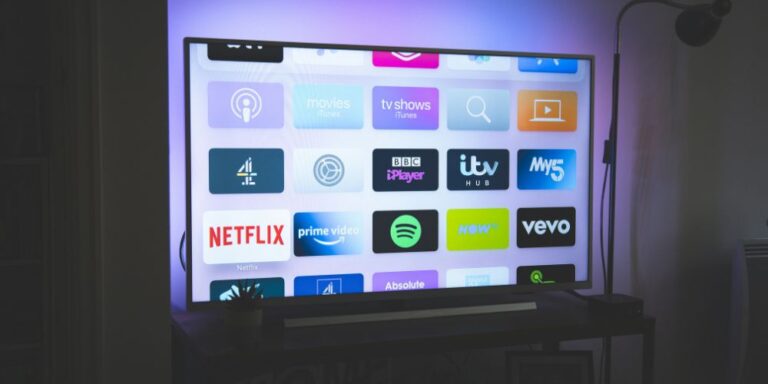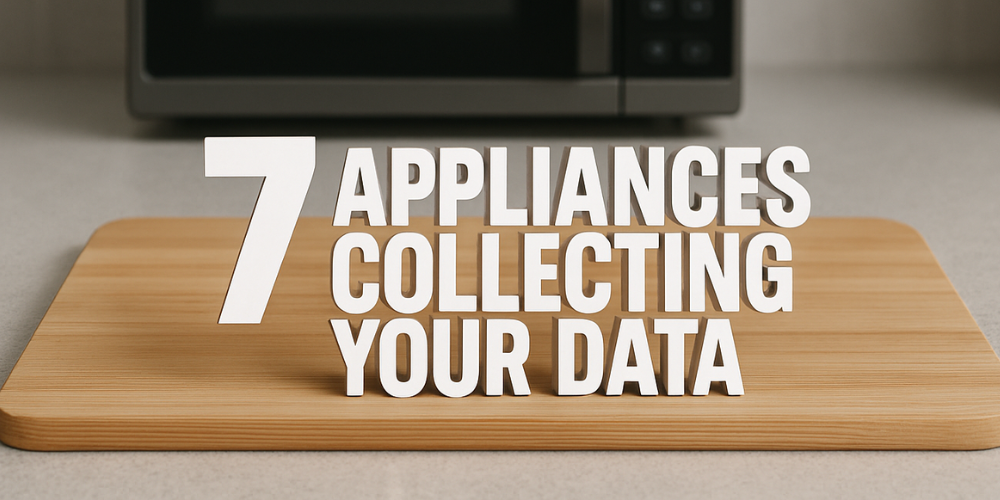We’re well aware that smartphones, laptops, and tablets track our every move. But what about everyday appliances like your air fryer or television? Increasingly, seemingly innocent household gadgets are quietly gathering data about us and sending it to third parties. And if you’re not clued in on this practice, it can catch you off guard. After all, your fridge is the last thing you’d expect to be spying on you. So, let’s explore some of the most surprising examples of these data-harvesting objects, and what you can do to reclaim your privacy.
1. Air fryers: Cooking… and listening?
A ‘Which?’ investigation last year found that some smart air fryers request highly intrusive permissions through their smartphone apps, such as audio recording and precise location tracking. For example, Xiaomi’s app reportedly linked to Facebook and TikTok trackers and transmitted data to servers in China.
The Information Commissioner’s Office (ICO) responded with new guidance in June 2025, highlighting that these kitchen gadgets must be more transparent about their data usage and limit data collection to what’s strictly necessary. In short, if your air fryer is listening when it shouldn’t be, it probably is.
2. Smart TVs: Are they watching you back?
Smart TVs go beyond simply logging what you watch; they often record how you watch. Many models include Automatic Content Recognition (ACR) technology, which continuously monitors onscreen content to build a detailed profile of your preferences. Consumer Reports warn that disabling privacy-invading features (like ACR, voice capture, and viewing analytics) are often buried deep in settings. To take control, Consumer Reports explains how to opt out of those “snooping” features, though finding and disabling them can be a challenge.

3. Cars: Collecting your data on the road
As automobiles are equipped with increasingly futuristic technology, modern cars have effectively become mobile data servers, sending information about your location, driving style, and even in-car calls back to manufacturers, insurers and third‑party services. An Advanced Motoring article noted that many drivers are unaware of just how much their vehicles are sharing, warning that these data streams may influence insurance premiums or be sold for profit.
4. Toothbrushes: A brush with data snatching
Popular brands such as Oral‑B and Colgate offer connected toothbrushes that track brushing duration, pressure… and sometimes even facial scans. These apps often gather personal information (such as names, emails, brushing habits) and may have run afoul of biometric privacy regulations.
5. Smart fridges: a chilling way to take your information
Your fridge might track when food runs low, scan barcodes and maintain an inventory list, which is all data that could be sold or exploited. Now, these may seem like harmless details (after all, who cares if some third parties find out that I’m low on tenderstem broccoli?), but some past models have even been hacked (such as this incident from 2014), leaking personal account details. Practicing moderation and care when connecting fridges to Wi‑Fi is definitely a wise move.

6. Robot vacuums: hoovering up your data
Robot vacuums map your home’s layout so they can clean efficiently, meaning they create detailed floor plans which might be stored or shared with companies. Plus, smart bulbs can detect lighting and motion patterns to track your daily routines. It’s like having your very own personal cleaner/spy! Maybe now you’ll catch yourself giving your Roomba suspicious glances as you pass each other in the hallway.
7. Smart speakers: are they listening back?
Devices like Alexa and Google Home can activate unexpectedly. I’m sure you’ve noticed this happen before. Out of nowhere, your Amazon Echo will pipe up, playing a song that the silent room most certainly didn’t ask for. Strange, isn’t it? A significant portion of recordings do not seem to be user-initiated, raising questions around privacy, especially since some of this data is used for ad‑targeting. Additionally, these devices now send recordings to the cloud by default, which makes this uncertainty all the more concerning.
So what can you do?
- Review permissions and settings: Dig into your apps and devices, and disable features like location, voice capture, and automatic content recognition.
- Disconnect when not needed: Use “dumb” modes (such as switching off smart features or unplugging from Wi‑Fi).
- Favour physical controls: The ICO recommends choosing devices with physical privacy toggles.
- Keep firmware updated: Manufacturers often patch security and privacy flaws, so update regularly.
- Provide minimal data: Enter only what’s essential; fake info for unused features can reduce your exposure.
Are they really listening to us?
From your kitchen to the road, many “smart” gadgets may be quietly gathering more personal information than you might expect. The upside of convenience often comes at the cost of privacy, and unfortunately, not all manufacturers are transparent about what data they collect or why. The good news? Staying informed, proactive, and choosing devices with robust privacy controls means you can enjoy modern convenience without sacrificing your personal data. So if you’re feeling at all paranoid about what your kitchen gadgets are eavesdropping on, just dig into the privacy settings and make sure they aren’t butting in where they aren’t welcome.






